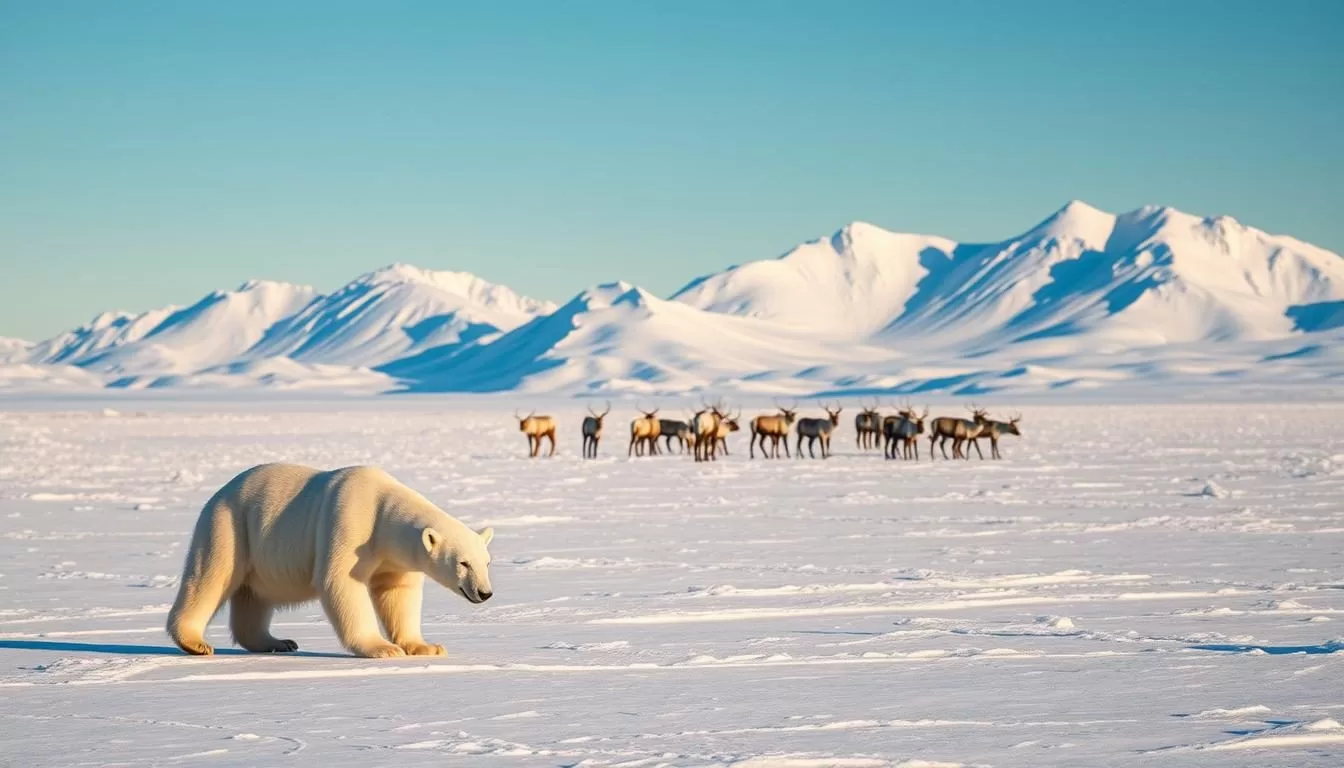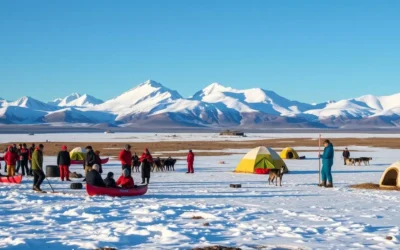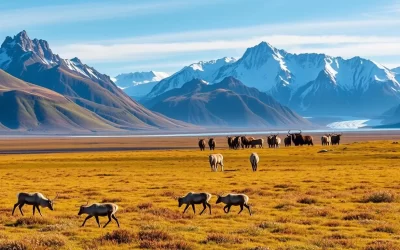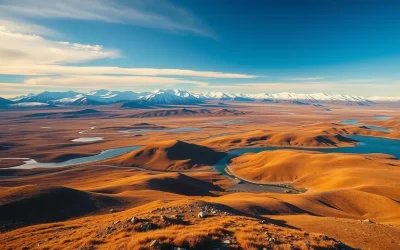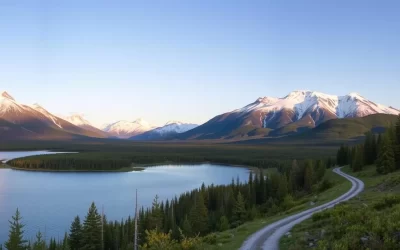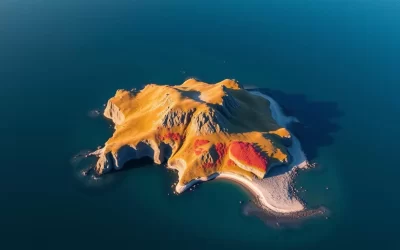✓ Accommodations✓ Flights✓ Rental Cars
Imagine embarking on a trip to one of the world’s most remote and fascinating destinations. Nunavut, a vast and sparsely populated territory, offers an unparalleled travel experience.
This Arctic landmass, making up a quarter of Canada‘s land area, is a haven for wildlife enthusiasts and adventure seekers alike. With its unique Indigenous culture and breathtaking landscapes, Nunavut is a place like no other on earth.
As you plan your journey, get ready to explore the list of extraordinary activities that this incredible region has to offer, from witnessing the majesty of narwhals at the floe edge to hiking through tundra landscapes that are truly out of this world.
Discovering Canada’s Arctic Territory
Experience the untouched wilderness and vibrant culture of Nunavut, Canada’s Arctic gem. As you plan your trip to this remote territory, understanding how to navigate its vast landscape is essential.
Getting to Nunavut
To reach Nunavut, you typically fly via Ottawa or Montreal with airlines such as Canadian North. Advance planning is crucial as flight schedules can be limited. Traveling between the 25 communities in Nunavut usually involves aircraft, cruise ships, or in some cases, snowmobile or dogsled expeditions.
Quick Facts About Nunavut
Nunavut is a vast territory, covering nearly 25% of Canada’s land area, yet it is home to only 33,330 residents. The capital, Iqaluit, serves as the main gateway for visitors and offers a glimpse into Inuit art and culture. With its rich history and diverse wildlife, including polar bears and caribou, Nunavut is a unique place to explore.
The landscape is characterized by its vast tundras, mountain ranges, and sea coastlines, making it an ideal destination for hiking and other outdoor activities. Visitors can enjoy the spring wildlife viewing, summer hiking under the midnight sun, or winter snowmobile adventures.
Wildlife Encounters in the Arctic
In the heart of the Arctic, Nunavut stands out as a premier destination for wildlife viewing. The territory is home to an incredible array of Arctic animals, including the elusive “Arctic Big Five.”
The Arctic Big Five
The Arctic Big Five are Polar Bears, Muskox, Belugas, Walruses, and Narwhals. Nunavut offers a unique opportunity to see these remarkable creatures in their natural habitat. Polar Bears are a highlight, with early spring being the best time to spot them along the floe edge.
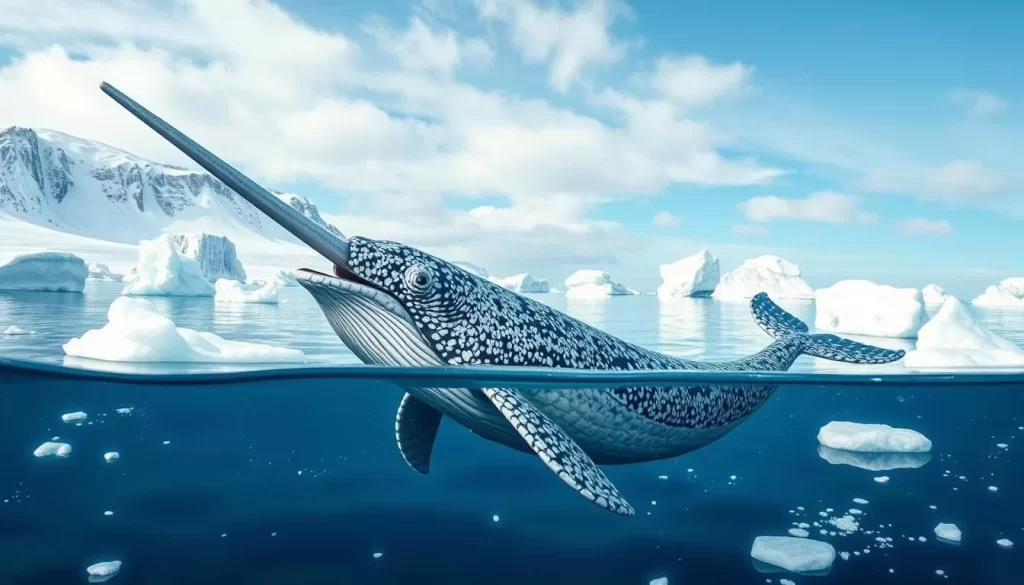
Other members of the Arctic Big Five, such as Belugas and Narwhals, can be spotted in locations like Resolute Bay, Pond Inlet, and Arctic Bay during the summer and fall. Meanwhile, Muskox and Caribou can be found in communities such as Baker Lake, Cambridge Bay, and Gjoa Haven.
Best Seasons for Wildlife Viewing
The season greatly affects wildlife viewing experiences in Nunavut. Early spring is ideal for viewing Polar Bears along the floe edge, while summer and fall are better for spotting Narwhals and Belugas in high Arctic locations.
Floe Edge Experiences
The floe edge, where frozen sea ice meets open water, is a biologically rich environment that attracts a variety of marine life. This unique phenomenon offers opportunities to witness an abundance of wildlife, including Polar Bears and Belugas, in their natural habitat.
Outdoor Adventures in Nunavut’s Vast Landscape
Nunavut’s vast and untouched landscape offers a plethora of outdoor adventures that cater to all kinds of explorers. The territory’s unique environment, characterized by rolling plateaus, glacial troughs, fiords, and mountains, provides a backdrop for a wide range of activities.
Exploring Auyuittuq National Park
Auyuittuq National Park is one of Nunavut’s crown jewels, featuring dramatic mountain scenery, massive glaciers, and the famous Akshayuk Pass. This park is a hiker’s paradise, attracting adventurers from around the world. The park’s diverse landscape offers various hiking trails for different skill levels, ensuring that everyone can experience its natural beauty.
Mountain Climbing and Hiking Opportunities
Nunavut offers some of the most challenging and rewarding mountain climbing opportunities on the planet. Mount Thor, located within Auyuittuq National Park, boasts the world’s greatest vertical drop, making it a must-visit for serious climbers. Beyond climbing, the territory’s vast wilderness is perfect for hiking, with trails that range from easy day hikes to multi-day treks.
Fishing for Arctic Char
Fishing for Arctic Char is a quintessential Nunavut experience, available in nearly every community. The best time to catch Arctic Char is during the summer months, from June to October. Popular fishing spots include Sylvia Grinnell River near the capital and the community of Pond Inlet, offering a chance to reel in this iconic fish.
The outdoor adventures in Nunavut not only provide thrilling experiences but also offer a deeper connection to the land and its history. By engaging in activities like hiking, climbing, and fishing, visitors can appreciate the territory’s vast landscape and understand its significance to the local Inuit community.
Immersing in Inuit Culture and Natural Wonders
In Nunavut, you can engage with the local community, learn about their traditions, and witness the spectacular displays of the Northern Lights. The territory is home to a rich Inuit culture, with a history dating back thousands of years.
One of the best ways to experience Inuit culture is by visiting museums and cultural centers, such as the Iqaluit gallery or the Uqqurmiut Centre for Arts and Crafts in Pangnirtung. Here, you can browse soapstone sculptures created by local Inuit artists, which tell stories of their relationship with the land, sea, and wildlife.
Nunavut is also known for its traditional cuisine, known as “country food,” which includes dishes made from caribou, muskox, Arctic char, and other local ingredients. You can enjoy these traditional foods on a guided tour led by Indigenous-owned businesses and leaders.
If you’re visiting in the spring, you can attend the Toonik Tyme Festival in Iqaluit, which celebrates Inuit traditions and culture. Alternatively, visit in the summer to experience the Alianait Festival, held in June. For optimal viewing of the Northern Lights, visit from fall to winter, when the skies are free of clouds.
Nunavut’s natural wonders are just as breathtaking as its cultural experiences. The territory is home to national parks, such as Auyuittuq National Park, which offer stunning landscapes and opportunities to see wildlife like narwhal and bird species.
By visiting Nunavut, you’ll not only be immersing yourself in a unique culture, but also supporting local communities and contributing to the preservation of this incredible place.
The above is subject to change.
Check back often to TRAVEL.COM for the latest travel tips and deals.
